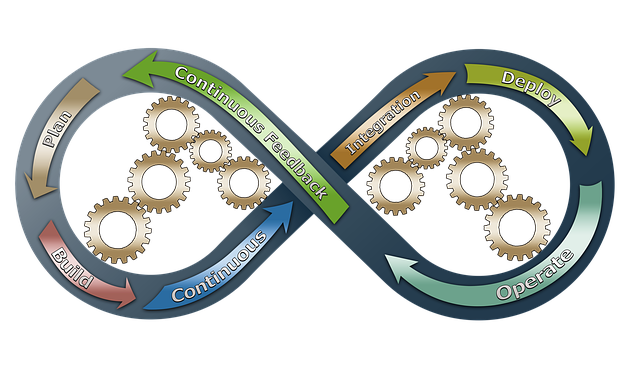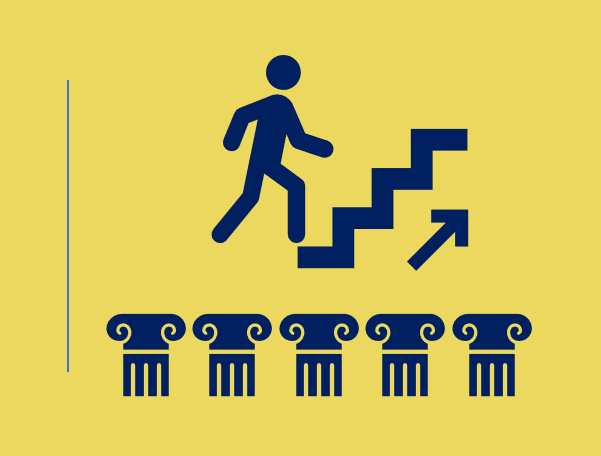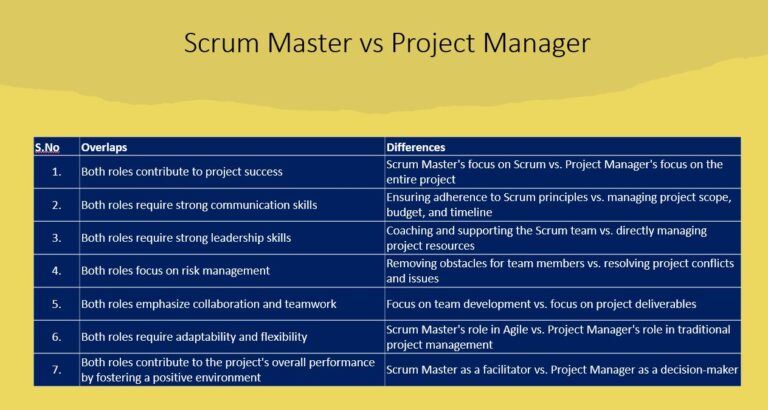How To Embrace Agile Working in 2023 – Harness Power of Continuous Improvement

Lean Agile has revolutionized the way businesses approach software development, project management, and various other disciplines by promoting efficiency, flexibility, and continuous improvement.
This post will delve deeper into the benefits of adopting agile methodologies and practices, such as flexible working, agile workplace, and agile work environment, as well as the core principles of Lean Agile.
By the end of this post, you’ll have a comprehensive understanding of how agile work can benefit businesses and software development teams, enhance customer satisfaction, and create a more adaptive and responsive organization.
The Origins of Lean Agile

Lean Agile was born out of the principles of lean manufacturing, which focus on reducing waste and maximizing efficiency. These principles were initially developed in the automotive industry to streamline production processes and eliminate any non-value-adding activities.
The lean manufacturing mindset has since been applied to numerous industries, including office space management, agile practices, and software development, where it has proven to be equally effective in driving performance improvements and fostering a culture of continuous innovation.
Adopting agile methodologies in the workplace has become increasingly popular as businesses seek more flexible working arrangements, office layouts, and work environments to accommodate diverse working styles and promote work-life balance.
The concept of agile working has expanded beyond traditional software development teams to encompass all aspects of business operations, from HR approaches to project management, and even organizational culture.
Agile working provides employees with the autonomy and flexibility to choose how, when, and where they work, helping them achieve a better work-life balance while also increasing productivity and satisfaction. This approach allows companies to attract and retain top talent, enhance team morale, and adapt to the evolving needs of their customers and the market.
The growing popularity of remote work, as well as the increasing need for businesses to be nimble and responsive to changes in their industries, has further underscored the importance of adopting agile methodologies. As a result, more and more organizations are embracing the principles of Lean Agile to remain competitive and drive growth.
Benefits of Embracing Lean Agile working

Embracing Lean Agile principles and methodologies can bring about a multitude of benefits for organizations across various industries. These wide-ranging advantages span from improvements in productivity and collaboration to increased employee satisfaction and customer-centricity. Let’s take a closer look at the transformative benefits of adopting Lean Agile:
Enhanced productivity and efficiency
Lean Agile focuses on streamlining processes, eliminating waste, and maximizing the use of available resources. As a result, employees can work more efficiently and effectively, boosting overall productivity.
Agile work environments are designed to provide employees with the tools and resources they need to work in ways that best suit their individual needs and preferences, further contributing to enhanced productivity.
Improved collaboration and communication
Agile methodologies emphasize the importance of open communication, teamwork, and collaboration. This fosters a culture of innovation and problem-solving, enabling teams to work together seamlessly and address common challenges more effectively.
In turn, this can lead to more efficient workflows, better outcomes for projects and tasks, and a stronger sense of unity within the organization.
Greater employee satisfaction and retention
By providing employees with more flexibility, autonomy, and opportunities for growth, businesses can enhance job satisfaction and increase employee retention. This can lead to a more engaged, motivated, and committed workforce, which can ultimately contribute to the company’s overall success.
Furthermore, a happier workforce is more likely to be productive, creative, and innovative, further driving the organization’s growth.
Better customer satisfaction and loyalty
Lean Agile places a strong emphasis on customer satisfaction and continually refining processes to deliver value. By focusing on meeting and exceeding customer expectations, businesses can improve customer satisfaction, leading to increased loyalty and repeat business.
In an increasingly competitive business landscape, customer satisfaction and loyalty are vital for long-term success and growth.
Increased adaptability and responsiveness (& Flexible working , agile workplace)
Lean Agile encourages organizations to be nimble, adaptive, and responsive to changes in their industries. This enables businesses to quickly pivot when faced with new challenges, market shifts, or customer needs, ensuring they remain competitive and continue to thrive in an ever-changing environment.
Streamlined decision-making and risk management (& agile workspace)
Lean Agile promotes the use of iterative, data-driven decision-making processes that allow organizations to make informed decisions, manage risks more effectively, and identify opportunities for improvement. This approach enables businesses to be more proactive and strategic in their decision-making, leading to better outcomes and long-term success.
Enhanced innovation and creativity (agile work environment)
By fostering a culture of continuous improvement and collaboration, Lean Agile empowers employees to think creatively, innovate, and find new ways to solve problems or address challenges. This can lead to the development of new products, services, or processes that drive growth and help the organization stay ahead of the competition.
Optimized resource utilization
Lean Agile principles can also be applied to office space management, leading to more efficient and effective use of available resources. For example, adopting an agile workspace design can provide employees with a variety of work settings and environments that support different tasks and working styles. This can lead to a more productive and engaged workforce while also reducing real estate costs and improving overall resource utilization.
By adopting Lean Agile methodologies and practices, organizations can experience a wide range of benefits that contribute to their growth, innovation, and long-term success. Embracing this transformative approach can help businesses stay competitive, resilient, and adaptive in an increasingly dynamic and fast-paced business landscape.
Five Core Principles of Lean Agile

Lean Agile is built upon five fundamental principles that guide its application across a variety of industries, ranging from software development to office space management. These guiding principles are:
Identify value
Recognizing the needs and desires of the customer for a particular product or service is crucial for the success of any project. This principle mandates that businesses take into account their customers’ expectations and requirements to guarantee that the final product offers the highest possible value. By doing so, companies can better align their efforts with customer needs, ensuring optimal outcomes and satisfaction.
Map the value stream
Value stream mapping is a powerful tool that allows businesses to visualize the entire process of delivering a product or service. This practice helps organizations identify areas of waste, inefficiencies, and potential improvements within their operations. By eliminating unnecessary steps and refining the overall value stream, companies can achieve greater efficiency, reduce costs, and deliver more value to their customers.
Create flow
After waste has been identified and removed from the value stream, it’s essential to ensure that the remaining processes operate seamlessly and effectively. This entails minimizing any bottlenecks, delays, and interruptions to guarantee a continuous flow of work. Creating flow enables businesses to deliver their products or services more quickly, improving customer satisfaction and increasing their competitive advantage.
Establish a pull system
Implementing a pull system means producing goods and services based on real-time demand rather than creating an inventory in advance. This approach minimizes the accumulation of inventory and work-in-progress (WIP) items, which in turn reduces costs and increases overall efficiency. By adopting a pull system, organizations can be more agile and responsive to fluctuations in customer demand and market conditions, ensuring that resources are allocated appropriately and waste is minimized.
Seek perfection
The pursuit of continuous improvement is a cornerstone of Lean Agile. Organizations should consistently strive to refine their processes, eliminate waste, and enhance efficiency in their quest for perfection. This commitment to ongoing improvement fosters a culture of innovation and adaptability, enabling businesses to stay ahead of their competitors, respond effectively to changes in their industry, and achieve long-term success.
By adhering to these five foundational principles, Lean Agile empowers organizations to optimize their operations, enhance customer satisfaction, and drive sustainable growth. Companies that embrace these guiding principles can effectively navigate an increasingly complex and dynamic business landscape, fostering a culture of innovation, adaptability, and excellence.
Implementing Lean Agile in Your Business

Implementing Lean Agile can have a significant impact on your business’s success, from software development teams to office space management. Here are some key steps to help you adopt and implement Lean Agile principles in your organization:
Assess your current processes: Before you can implement Lean Agile, it’s essential to have a clear understanding of your current processes and identify any inefficiencies or waste. This will provide a solid foundation for implementing improvements.
Train employees and teams: To successfully adopt agile methodologies, businesses must ensure that their employees and teams are well-versed in Lean Agile principles and practices. This may involve conducting training sessions, workshops, or seminars to provide the necessary knowledge and skills.
Encourage collaboration and open communication: A successful agile work environment relies on open communication and collaboration among team members. Foster a culture of openness and sharing ideas, encouraging employees to contribute to brainstorming sessions and problem-solving discussions.
Establish an agile workspace: An agile workspace is designed to provide maximum flexibility and accommodate different working styles. This may include creating breakout spaces, quiet zones, hot desks, and meeting rooms that can be adapted to suit various work requirements.
Leverage technology and tools: Implementing the right tools and technology can support an agile work environment by enabling unified communications, seamless collaboration, and efficient work practices. Research and invest in tools that best suit your team’s needs and help streamline workflows.
Monitor and evaluate progress: Continuously track and measure the impact of your Lean Agile implementation on your business’s performance. This will help you identify areas for improvement and refine your processes to ensure continuous growth and development.
Overcoming Common Challenges in Implementing Lean Agile

While Lean Agile can offer numerous benefits, businesses may face several challenges when adopting and implementing these methodologies. Some common challenges include:
- Resistance to change: Employees may be resistant to change, particularly when transitioning from a traditional office setting to an agile workspace. Providing clear communication and support throughout the process can help ease this transition and ensure employees understand the benefits of the new approach.
- Balancing flexibility with structure: While Lean Agile promotes flexibility and adaptability, businesses must still maintain a level of structure and organization to ensure projects and tasks are completed efficiently. Establishing clear guidelines and expectations can help strike the right balance between flexibility and structure.
- Scaling agile methodologies: As businesses grow and expand, it may become increasingly challenging to scale agile practices and maintain the benefits of Lean Agile. Careful planning and the use of appropriate tools can help facilitate the scaling process.
Wrap Up
Embracing Lean Agile principles and practices can transform your business, leading to increased efficiency, reduced costs, and improved customer satisfaction. By implementing the core principles of Lean Agile and adapting your workplace to support agile work environments, you can unlock the full potential of your teams and drive your business towards success.
With continuous improvement at the heart of Lean Agile, your business will be well-equipped to navigate the challenges of an ever-changing market and stay ahead of the competition.
Frequently Asked Questions
How can I implement agile methodology within my organization?
To implement agile methodology within your organization, start by educating your team members about the core principles of the agile manifesto, which emphasizes customer collaboration, adaptive planning, and continuous improvement. Next, form an agile team that includes diverse roles and expertise to ensure effective collaboration.
Then, select an agile method suitable for your organization’s needs, such as Scrum or Kanban, and adapt your office layout and working environment to promote flexible office spaces and creative teams. Finally, nurture a company culture that supports agile working and continuous learning.
What are the benefits of agile working for businesses?
Agile working offers numerous benefits, including improved customer satisfaction, increased productivity, and enhanced adaptability to change. By focusing on collaboration, flexibility, and continuous improvement, agile methods enable organizations to deliver higher-quality products and services more quickly.
Additionally, agile workspaces and flexible offices help promote work-life balance, foster innovation, and boost team morale.
How do agile methods produce results?
Agile methods produce results by emphasizing iterative development, continuous feedback, and adaptive planning. These approaches enable teams to respond quickly to changing requirements and new information, ensuring that the final product or service meets customer needs and expectations.
By breaking projects into smaller, manageable tasks, agile teams can deliver value incrementally, allowing for continuous improvement and refinement throughout the development process.
What is the role of company culture in agile workspaces?
Company culture plays a significant role in the success of agile workspaces. A culture that embraces collaboration, transparency, and continuous improvement helps create an environment where agile teams can thrive.
By fostering a culture of trust, empowerment, and support, organizations can effectively promote the adoption of agile methods and reap the huge benefits that come with agile working.
How can creative teams benefit from an agile workspace?
Creative teams can benefit from an agile workspace through increased collaboration, flexibility, and adaptability. Agile workspaces often feature open layouts, breakout spaces, and a variety of work settings to suit different working styles and needs.
This flexibility enables creative teams to work more effectively, share ideas, and iterate on projects quickly, leading to better outcomes and increased innovation.
If you are into productivity apps , you might be interested in AI writers like CopyAI, Peppertype, Quillbot or Writecream. Read more here. I also write at Medium.





